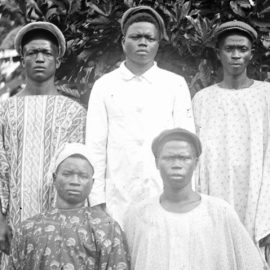

This article is an excerpt from the Shortform book guide to "The Autobiography of Malcolm X" by Malcolm X and Alex Haley. Shortform has the world's best summaries and analyses of books you should be reading.
Like this article? Sign up for a free trial here.
Who was Malcolm X’s mother? What role did she play in his life? What can her life teach us today?
Though she looked white, Louise Little was a multiracial woman who was married to a Black man in the first half of the 20th century. Malcolm X writes about how his mother endured the tragic death of her husband, struggled to find work during the Great Depression, and ultimately lost access to her children.
Read more to learn about the life of Malcolm X’s mother and what it reveals about the era she lived in.
Malcolm X’s Mother
In his autobiography, Malcolm X explains that he was born Malcolm Little on May 19, 1925, in Omaha, Nebraska. The family moved often, eventually settling in Lansing, Michigan. When Malcolm X was six, his father died, and the family suffered tremendously because Malcolm X had been the sole breadwinner and the Great Depression was on.
The family received some welfare, and Malcolm X’s mother, Louise Little, tried to work. But, the racism she encountered made it hard for her to keep a job. She was multiracial and appeared white, but, when employers eventually found out that she was Black, they fired her.
Under incredible strain trying to keep the family together, Malcolm X’s mother struggled with her mental health and eventually became incapable of caring for her children. The state removed them and committed her to a psychiatric hospital. Upon reflection, Malcolm X believed that his mother lost her children and her mental health because the state didn’t give her enough help.
Malcolm X’s discussion of his mother centers mostly on the ways she suffered under a racist system, but recently, some scholars of the family have been celebrating an empowered Louise Little who fought stalwartly against racism. Little was as devoted to Garvey’s Back-to-Africa movement as her husband was—in fact, they met at a Garvey event. Together, they founded three chapters of Garvey’s organization, and she served as chapter secretary and as a reporter for the organization’s newspaper. She also educated her children and defended them from anti-Blackness.
Despite her pride in being Black, the reality was that white people had access to more and better job opportunities. So, after her husband’s death (whose cause is still not definitively known), Little capitalized on her light complexion to pass as white. According to historians, passing was a common practice that gave light-skinned Black and multiracial individuals access to both legal and social freedom, during and after slavery. Passing could be a moral conundrum: Though it might help you achieve a better life, it often required you to sever family ties and ultimately supported white supremacy.
The pressure on Louise Little after her husband’s death—including a suitor impregnating and then abandoning her—was too much, which led to the state’s removal of her children. Many Black mothers today have similar experiences with the child welfare system: State intervention is more common in Black families (one in 10 Black children are removed from their homes), which some scholars understand as a punishment for poverty that’s rooted in slavery. Family separation can have grave consequences, including a higher risk of incarceration for children.

———End of Preview———
Like what you just read? Read the rest of the world's best book summary and analysis of Malcolm X and Alex Haley's "The Autobiography of Malcolm X" at Shortform.
Here's what you'll find in our full The Autobiography of Malcolm X summary:
- Malcolm X explains why he believed what he believed
- The historical and sociological context surrounding Malcolm X’s life
- Why Malcolm X was such a controversial figure






